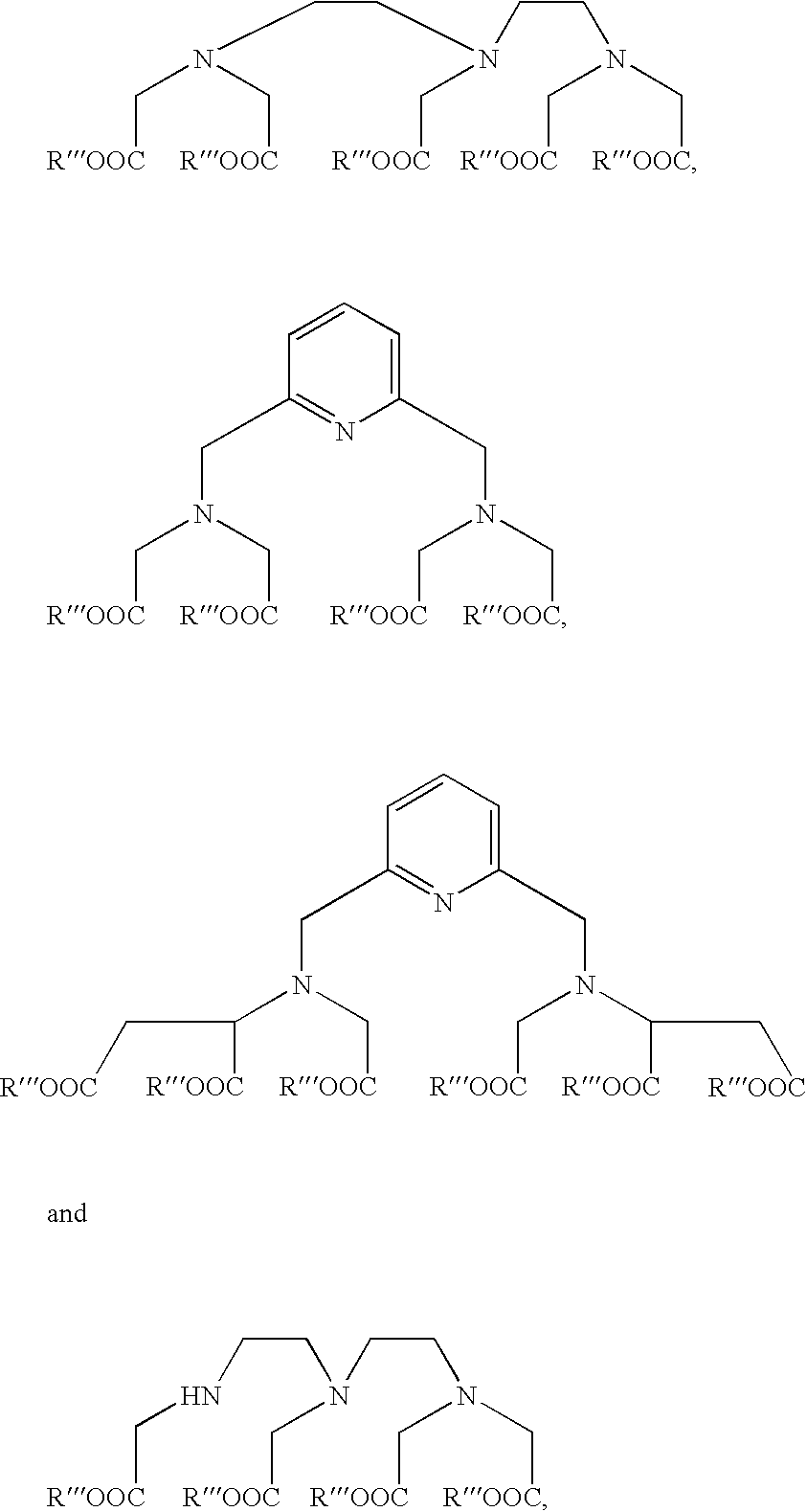Oligonucleotide labeling reactants and their use
a technology of oligonucleotide and reactant, applied in the field of oligonucleotide labeling reactants and their use, can solve the problems of reducing the purity of these analogues, and reducing the purity of the analogues, so as to improve the labeling of oligonucleotides
- Summary
- Abstract
- Description
- Claims
- Application Information
AI Technical Summary
Benefits of technology
Problems solved by technology
Method used
Image
Examples
example 2
[0108] The synthesis of 5'-O-(4,4'-dimethoxytrityl)-N3-(N6-trifluoroacetam-idohexyl)-thymidine (2)
[0109] The title compound was synthesized as described in example 1 for compound 1 by using 5'-O-(4,4'-dimethoxytrityl)thymidine as the starting material. The yield was 76%. .sup.1H NMR (DMSO-d.sub.6; 500 MHz): .delta. 9.35 (1H, br t, J 5.2, NH); 7.54 (1H, d, J 1.1, H-6); 7.38-7.23 (9H, DMT); 6.88 (4H, d, DMT); 6.22 (1H, t, J 6.6, H-1'); 5.31 (1H, d, J 4.6, 3'-OH); 4.31 (1H, m, H-3'); 3.89 (1H, m, H-4'); 3.77 (2H, m, NCH.sub.2); 3.72 (6H, s, 2.OCH.sub.3); 3.21 (1H, dd, J 5.8 and 10.6H-5'); 3.16 (1H, dd, J 3.0 and 10.6, H-5"); 3.15 (2H, m, CH.sub.2NH); 2.24 (1H, m, H-2"); 2.17 81H, m, H-2'); 1.49 (3H, d, J 1.1 5-CH.sub.3); 1.48 (2H, m, NCH.sub.2CH.sub.2); 1.45 (2H, m, CH.sub.2CH.sub.2NH); 1.26 (4H, m, 2.CH.sub.2). .sup.13C NMR (DMSO-d.sub.6) .delta.: 162.5 (C4), 158.1 (C.dbd.O), 156.1 (q, J.sub.C,F 35.9, CF.sub.3); 150.2 (C2); 144.7 (DMT); 134.3 (C6); 129.7, 127.8, 127.66, 126.7, 113.1 (...
example 3
[0110] The synthesis of 2'-deoxy-5'-O-(4,4'-dimethoxytrityl)-N3-(N6-triflu-oroacetamidohexyl)uridine 3'-O-(2-cyanoetlyl N,N-diisopropyl)phosphoramidi-te (3)
[0111] Predried compound 1 and 2-cyanoethyl N,N,N',N'-tetraisopropylphosph-ordiamidite (1.5 eq) were dissolved in dry acetonitrile. 1H tetrazole (1 eq; 0.45 M in acetonitrile) was added, and the mixture was stirred for 30 min at room temperature before being poured into 5% NaHCO.sub.3 and extracted with dichloromethane and dried over Na.sub.2SO.sub.4. Precipitation from cold (-70.degree. C.) hexane yielded the title compound as a white powder. Compound 3: .sup.31P NMR (CDCl.sub.3): .delta. 148.6 (0.5 P), 148.4 (0.5 P).
example 4
[0112] The synthesis of 5'-O-(4,4'-dimethoxytrityl)-N3-(N6-trifluoroacetam-idohexyl)-thymidine 3'-O-(2-cyanoethyl N,N-diisopropyl)phosphoramidite (4)
[0113] Phosphitylation of compound 2 as described in example 3 for compound 1 yielded the title compound as a white powder. Compound 4: .sup.31P NMR (CDCl.sub.3): .delta. 148.6 (0.5 P), 148.4 (0.5 P).
PUM
| Property | Measurement | Unit |
|---|---|---|
| temperature | aaaaa | aaaaa |
| volume | aaaaa | aaaaa |
| v/v | aaaaa | aaaaa |
Abstract
Description
Claims
Application Information
 Login to View More
Login to View More - R&D
- Intellectual Property
- Life Sciences
- Materials
- Tech Scout
- Unparalleled Data Quality
- Higher Quality Content
- 60% Fewer Hallucinations
Browse by: Latest US Patents, China's latest patents, Technical Efficacy Thesaurus, Application Domain, Technology Topic, Popular Technical Reports.
© 2025 PatSnap. All rights reserved.Legal|Privacy policy|Modern Slavery Act Transparency Statement|Sitemap|About US| Contact US: help@patsnap.com



